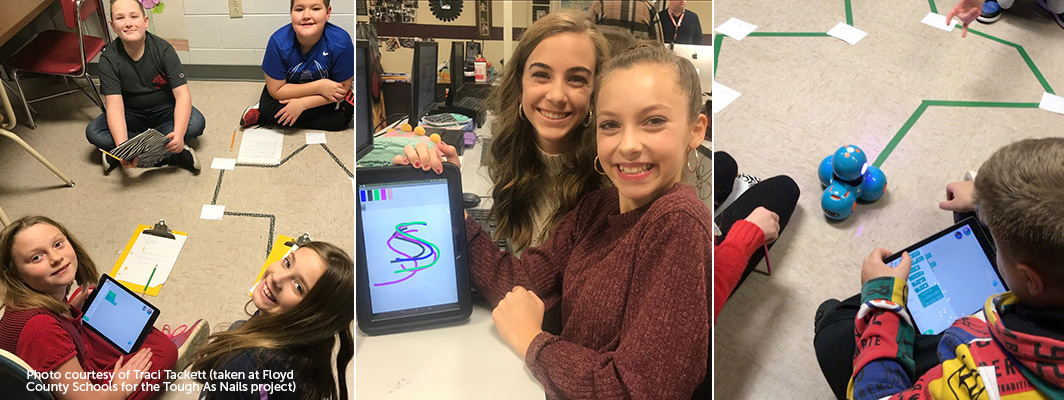
August 24, 2020 | By Kelly Mills, Quinn Burke and Pati Ruiz
What does it look like to integrate computational thinking and computer science in the classroom?
Digital Promise has been working with districts and educators from across the United States to integrate computational thinking (CT) and computer science (CS) into K-12 classrooms. We’ve developed “Look for” documents to support teachers and administrators in envisioning how this fusion could work in elementary and middle school classrooms.
Interviews with teachers, administrators, and other researchers showed us that “Look for” documents offer teachers and administrators a mutual starting point for collaborative visioning, self-assessment, and collective goal-setting for classroom practice. They remind administrators of “walk through” documents or forms that are often used during classroom observations to help administrators focus on specific elements of instruction so they can provide rich feedback to educators.
In this context, a CT “Look for” document defines and makes CT practices measurable by identifying subcomponents of each CT practice. Subcomponents include student behaviors associated with each practice and probing questions to facilitate student engagement in CT practices. These documents have been used successfully as self-reflective measures to gauge teachers’ understanding of key CT practices and how they use these with their middle school students. “Look for” documents can also facilitate instructional coaching to help teachers integrate CT into their existing lessons. In addition, a CT “Look for” document might be particularly helpful to administrators since defining CT has been an ongoing challenge for school districts.

A preview of the “Look for” document for the Computational Thinking practice of Understanding Systems with Computational Models.
Some districts narrowly understand CT as learning to code, while other districts consider CT to involve “problem solving” and “21st century learning skills,” terms that offer little in substance and cross-disciplinary integration. Schools need more robust examples that focus on what CT is (and isn’t), and they need specific support around K-12 CT integration.
While the documents may also be useful for practitioners looking to assess CT, they should not be used as rigid check-lists. Not unlike CSforAll’s Strategic CSforALL Resource & Implementation Planning Tool, “Look for” documents offer educators and administrators a mutual starting point for consensus-building, self-assessment, and goal-setting for classroom practice. “Look for” documents show promise for districts committed to developing their own K-12 computing pathways.
Moving forward, as our team developers “Look for” documents for a range of disciplines, our team is thinking about how future CT/CS professional development (PD) can be paired with these “Look for” documents, and how such PD can be inclusive of teachers and administrators.The team is committed to forming district and state partnerships to incorporate “Look for” documents into existing PD offerings as well as identifying funding opportunities to more systematically evaluate their effect on classroom practice.
Take a look at the “Look for” documents on Understanding Systems with Computational Models, Creating Algorithms, and Data Practices. These resources were developed for the CT for Next Generation Science Standards project and you can find more resources at the CT4NGSS Toolkit here.
Find computational thinking resources:
By Elliott Barnes and Sara Mungall